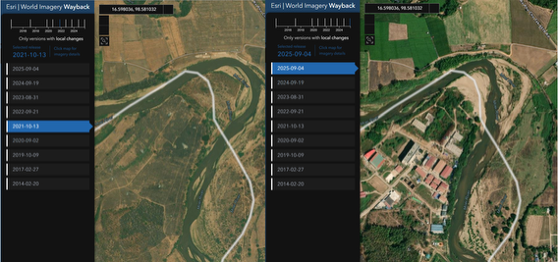Massimo Moratti thought he was helping his country. When the voice on the phone claimed to be Italy's Defense Minister Guido Crosetto, urgently requesting funds to rescue kidnapped journalists, the former Inter Milan owner didn't hesitate. Within hours, nearly one million euros had vanished into a fraudulent Hong Kong account.
The voice was perfect - every inflection, every regional accent. It wasn't the Defense Minister. It was AI.
Across Southern Europe, a new breed of cybercrime is emerging - one that operates around the clock, leverages artificial intelligence at industrial scale, and targets our most fundamental human instincts: trust, fear, and the desire to help.
The Numbers Tell a Stark Story
AI-enabled cyberattacks have exploded by 4,000% since 2022. In Southern Europe specifically, this surge is reshaping the fraud landscape. Portugal saw financial scams increase 112% in the first quarter of 2025 alone. Spain intercepted a €19 million crypto fraud scheme using AI-generated celebrity endorsements to lure over 200 victims.
These statistics only capture what we can measure. The true scope runs deeper - into boardrooms where executives question every urgent phone call and into financial institutions struggling to distinguish legitimate transactions from sophisticated manipulation.
When cybercrime goes corporate
Today's fraud operations run like Fortune 500 companies. The "Scam Empire" investigation revealed call centers spanning Eastern Europe, Georgia, Spain, and Cyprus - complete with HR departments, quality control teams, and performance metrics.
These aren't opportunistic criminals. They're professional organizations using platforms like FraudGPT to craft flawless phishing emails, analyze stolen company data to personalize attacks, and provide real-time coaching to human agents during victim calls.
The Ferrari attack exemplifies this sophistication. Scammers cloned CEO Benedetto Vigna's voice, replicating his distinctive southern Italian accent and initiating contact through WhatsApp before escalating to the deepfake call. The attack failed only because vigilant executives asked a verification question the AI couldn't answer.
The psychology behind the technology
What makes these AI-powered scams particularly dangerous isn't just their technical sophistication - it's their psychological precision. Traditional cyberattacks exploited system vulnerabilities. Modern fraud exploits human vulnerabilities.
AI analyzes social media posts, professional networks, and public comments to craft personalized lures. It creates fake personas with fabricated histories and weaponizes emotions - urgency, authority, fear, and trust - with surgical precision.
The Defense Minister impersonation that fooled Moratti combined patriotic duty with personal urgency. Scammers knew their target's profile, his wealth, and exactly which emotional buttons to press.
The detection challenge
Here's the uncomfortable truth: when someone is socially engineered, traditional fraud detection often fails. The credentials are correct. The user is authenticated. The device is recognized. By every technical measure, the transaction appears legitimate.
But the user is compromised.
This creates the "insider threat paradox" - the system trusts the login, but the human behind it is acting under duress or deception. In Southern Europe, where high-trust business cultures rely on voice confirmation and personal relationships, this vulnerability is particularly acute.
Beyond traditional defenses
The answer lies not in what users know or what they are, but in how they behave. Advanced behavioral analysis represents a paradigm shift from static authentication to continuous verification - analyzing micro-behaviors to create an unforgeable digital fingerprint.
Every person has unique patterns in how they type, move their mouse, and navigate screens. These behaviors are extraordinarily difficult to replicate, even with advanced AI. More importantly, they change detectably when someone is under duress or being coached by external parties.
Modern behavioral analytics systems monitor keystroke dynamics, mouse movements, and navigation patterns to create real-time profiles that can detect anomalies invisible to traditional security systems.
The 24/7 fraud economy
Unlike traditional cybercrime, AI-powered social engineering doesn't require human oversight for every attack. Automated systems identify targets, craft personalized lures, and conduct initial contact while human operators sleep. Call centers in different time zones ensure continuous operation.
This creates a fraud economy that never rests. While security teams work business hours, attacks continue around the clock. While employees train on quarterly phishing simulations, AI generates thousands of personalized attacks daily.
Building human-aware defenses
Financial institutions need defense systems that understand not just technical indicators, but human behavioral ones. Systems that detect when a legitimate user is acting under external influence. Systems that recognize the subtle stress patterns of someone being coached during a transaction.
This requires moving beyond traditional rule-based detection to AI-powered behavioral analysis. It means continuous authentication rather than point-in-time verification. Most importantly, it means recognizing that the question isn't just "Who is this user?" but "Why are they acting this way?"
The bottom line
Southern Europe's experience offers a clear lesson: traditional defenses aren't enough. When criminals can perfectly mimic voices, craft personalized psychological lures, and operate at industrial scale around the clock, financial institutions need defenses that understand both technology and human behavior.



